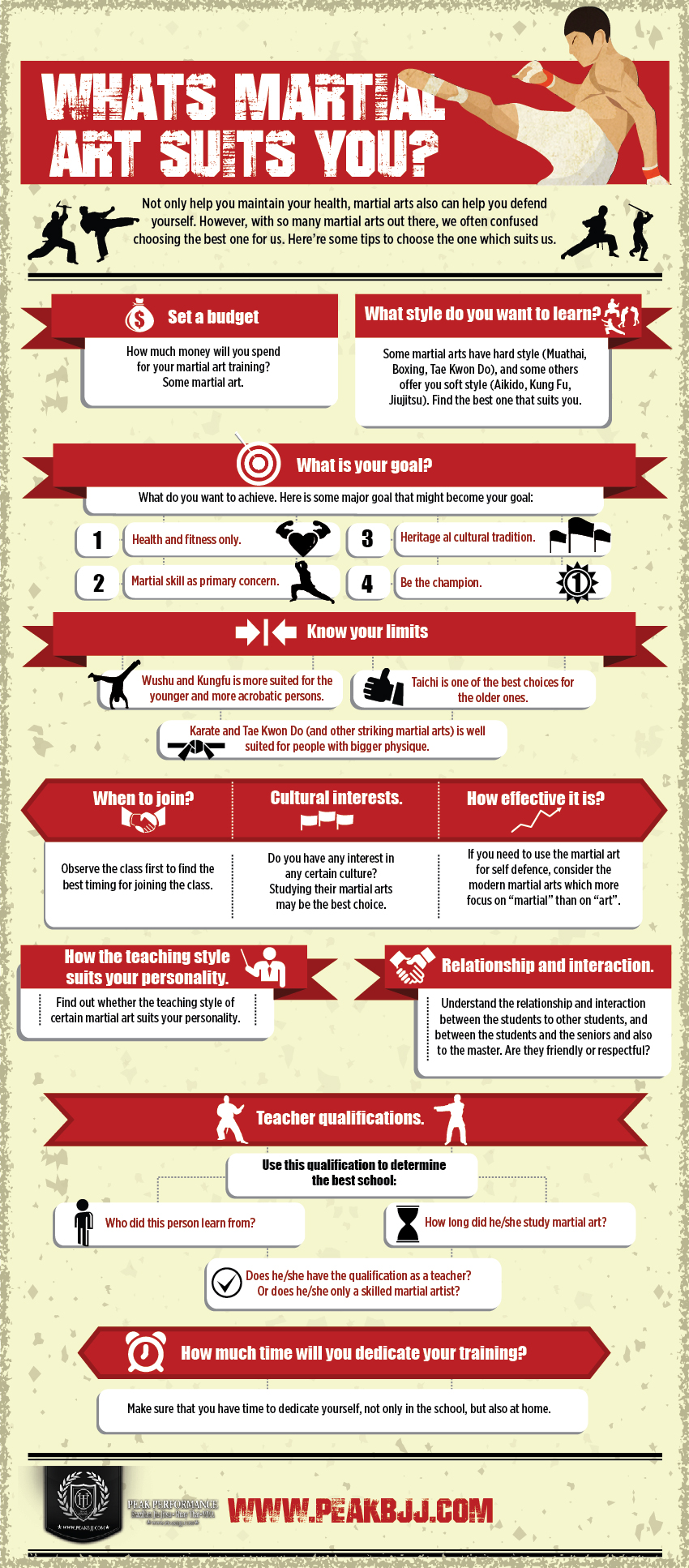Powerful Protection Methods With Martial Arts Training
Powerful Protection Methods With Martial Arts Training
Blog Article
Web Content Author-Sharma Husum
Have you ever found yourself in a situation where you really felt threatened and wanted you knew how to protect on your own?
Picture this: you're walking alone during the night when suddenly, an unfamiliar person approaches you with hostile intent. In such moments, having a strong understanding of reliable martial arts techniques for protection can make all the difference.
Yet what are these methods? Which ones should you learn to guarantee your safety and security? In this discussion, we will discover a series of techniques, from strikes and kicks to joint locks and throws, in addition to defensive maneuvers and escapes.
By private karate lessons near me , you'll have a clearer understanding of the abilities that can empower you to protect on your own in potentially hazardous circumstances.
So, allow' mixed martial arts in and uncover the globe of reliable martial arts techniques for protection.
Strikes and Kicks
When it concerns self-defense, strikes and kicks are necessary strategies that can efficiently immobilize an assaulter.
In an unsafe situation, your capacity to strike with precision and power can be the distinction between escaping unhurt and ending up being a target.
Strikes involve using your hands, elbows, knees, or even your head to deliver powerful blows to at risk locations of the body, such as the nose, throat, or groin.
Kicks, on the other hand, utilize the stamina of your legs to deliver strong strikes to an opponent's legs, torso, or head.
By combining correct strategy with speed and precision, you can rapidly disable an attacker and produce a chance to leave.
Bear in mind to aim for at risk locations and use your body's all-natural weapons to your benefit.
Joint Locks and Throws
After grasping strikes and kicks, you can better boost your self-defense skills by learning joint locks and tosses. Joint locks are techniques that entail controling your opponent's joints, triggering discomfort or immobilization.
Tosses, on the other hand, include utilizing your opponent's momentum versus them to take them to the ground.
These strategies not just provide you with efficient means to manage and reduce the effects of an assailant, yet they additionally instill a feeling of confidence and empowerment.
By grasping joint locks and throws, you'll have the ability to promptly and successfully disarm an opponent, giving you the advantage in any type of self-defense situation.
Keep in mind, protection has to do with securing yourself and others, and these strategies can assist you do just that. So, why wait?
Start finding out joint locks and throws today and be planned for any type of scenario that comes your method.
Defensive Maneuvers and Escapes
To properly defend yourself in a hazardous scenario, it's crucial to grasp defensive maneuvers and escapes. These methods are created to help you avert and get over an enemy swiftly and efficiently.
One effective defensive maneuver is the avoid. By tipping sideways, you can prevent an approaching strike and create a possibility to counterattack.
An additional helpful method is the duck and cover. This entails bending down and covering your head and essential locations with your arms. It can safeguard you from strikes and allow you to examine the situation and plan your following step.
Furthermore, finding out escapes such as wrist grabs, bear hugs, and chokeholds can assist you damage free from an assailant's understanding and produce distance.
Conclusion
In the world of self-defense, grasping effective martial arts strategies is vital. Whether it's the swift strikes and effective kicks that leave your challenger stunned, the experienced implementation of joint locks and tosses that debilitate them, or the defensive maneuvers and gets away that grant you liberty, these techniques resemble a lively tapestry of security.
Like a proficient artist with a brush, you can paint a picture of safety and self-confidence with every step you make.
